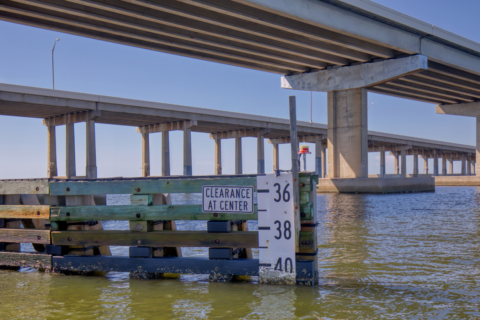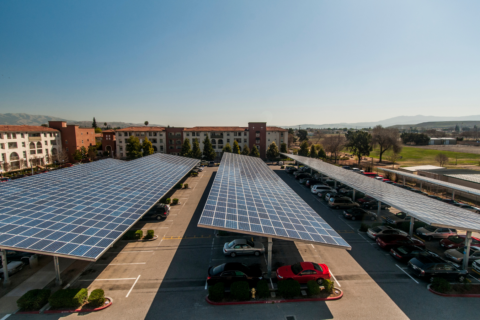As we celebrate the one-year anniversary of the Inflation Reduction Act (IRA), signed on August 16, 2022, this blog is the second of a two-part series looking at the status of 10 key programs from the IRA and resources for local leaders. As a refresher, this previous blog identified all the local government opportunities and the associated funding levels.
This blog showcases forthcoming funding opportunities and other programs created through the IRA:
Climate Pollution Reduction Grants
Under this U.S. Environmental Protection Agency (EPA) program, funded at $5 billion overall, federal funding is available to local governments to develop a new greenhouse gas reduction plan or modify an existing plan, and to subsequently implement projects under the plan.
Phase 1 planning grants were awarded to states ($3 million each; three states declined funding) and Metropolitan Statistical Areas (MSA; $1 million each). This list shows the lead entities that received funding. The next deadline for these lead entities is March 1, 2024 to submit a Priority Climate Action Plan to EPA.
The next step for local governments regarding the planning grants is to get in touch with either your state lead agency or a regional lead entity to be included in the state or regional planning effort. Entities are encouraged to work across jurisdictions and are not limited to a particular state or MSA.
Phase 2 of the Climate Pollution Reduction Grants will focus on implementation. The Notice of Funding Opportunity (NOFO) is expected to open in September, with a due date in April 2024, for $4.75 billion in funding. The implementation grants are open to any entity that receives a planning grant to develop a Priority Climate Action Plan or is “covered by” or included in a state or regional plan.
Elective Pay Option for Clean Energy Projects
The IRA includes a provision that provides non-taxable entities, such as local governments and municipal power and water utilities, investing in and producing clean energy with a direct payment option in lieu of tax credits.
In June, the Internal Revenue Service released proposed regulations for elective pay, previously referred to as “direct pay,” and solicited public comment. It is likely the final regulations will be out by the end of the year or early 2024.
NLC produced a blog series and co-hosted a webinar to dig deeper into the clean energy elective pay option and how local leaders can get started on this new opportunity:
- Inflation Reduction Act: Clean Energy Project Eligibility for Local Governments
- How Local Governments Can Use Direct Pay on Clean Energy Projects
- Getting Started: New Elective Pay Options for Local Clean Energy Projects
- Webinar: IRA Elective Pay for Local Governments
Greenhouse Gas Reduction Fund – Solar for All
The Solar for All program ($7 billion) is the main program under the EPA Greenhouse Gas Reduction Fund ($27 billion overall) directly available to local governments. The Solar for All competition aims to expand the number of low-income and disadvantaged communities primed for distributed solar investment.
Grantees can use funds to expand existing low-income solar programs or design and deploy new programs to tackle the financial and non-financial barriers that limit the ability of low-income and disadvantaged communities of benefiting from the rapid growth in distributed solar capacity.
EPA will not fund individual projects under this competition but rather long-lasting programs that transform markets by providing financial assistance to many projects and funding project-deployment technical assistance such as workforce development, project development services, consumer education and outreach and more.
The Notice of Intent to participate was due August 14 for local governments, with the full application due September 26. EPA will award up to 60 grants to states, territories, Tribal governments, municipalities and nonprofits.
Earlier this year, the U.S. Department of Agriculture (USDA) opened a NOFO for Urban and Community Forestry grants ($1 billion) to increase equitable access to urban tree canopy, broaden community engagement in local urban forestry planning and improve community and urban forest resilience to climate change, pests and storm events. The Forest Service expects to make award announcements by September 30, 2023. The next NOFO, funded through annual appropriations, not IRA funding, has not yet been announced.
Federal funding for local building energy codes received funding from both the Bipartisan Infrastructure Law ($225 million) and IRA ($1 billion). Under the IRA funding, the U.S. Department of Energy (DOE) will provide $330 million in grants for adopting the latest building energy codes for residential and commercial buildings and $670 million for adopting a building energy code that meets or exceed the zero energy provisions of the 2021 International Energy Code Council code or equivalent.
Funding awards will support states and local jurisdictions in adopting, implementing, and enforcing the latest model, zero energy codes, or equivalent codes and standards, improving residential and commercial new construction and retrofits and transitioning the building stock to more efficient, decarbonized buildings for all.
Consumer Tax Credits and Rebates
The IRA provides a variety of tax credits and rebates aimed at individuals and households to transform their energy use and consumption – from home energy efficiency improvements to rooftop solar and electric vehicles. Generally, consumer tax credits will be claimed on federal tax returns; rebate programs will flow through state agency offices.
Local leaders have an important role to play in helping their residents understand and take advantage of these opportunities. Here are some resources:
- White House Clean Energy Tax Provisions in the Inflation Reduction Act
- House Energy and Commerce Committee IRA Information on Energy Rebates and Tax Credits
- EnergyStar Federal Income Tax Credits and Incentives for Energy Efficiency
Under the DOE Home Efficiency Rebates ($4.3 billion) and Home Electrification and Appliance Rebates ($4.5 billion), applications are now open for states to claim their formula allocations and begin designing their own rebate programs accessible to households. Exact timing will vary by state, but generally, DOE expects households to be able to access these rebates in 2024.
Next Steps and Additional Resources
Local leaders are excited to utilize these opportunities to support climate action in their communities, and many are planning projects to apply for funding and tax credits. As federal agencies continue to develop the programs and issue NOFOs, NLC will keep local leaders apprised of grant opportunities.
Some members of Congress seek to repeal some of these programs and funding allocations, which NLC strongly opposes. Therefore, it is important for local leaders to share their plans, priorities and the key grant programs they are interested in or applying for with their Members of Congress.
EPA recently held a virtual Climate Action Funding Fair, bringing together these federal agencies to share their insights and the opportunities for local governments to leverage complementary incentives as they develop and implement climate action plans. The sessions were recorded and will be available on the website, along with this funding guide with links to the relevant programs.
Finally, for communities that seek to pursue climate action planning or funding for project implementation, a Local Infrastructure Hub bootcamp will kick off in September to support cities in reducing greenhouse gas emissions through clean energy, electric vehicles and building efficiency. Registration will open August 28th.









